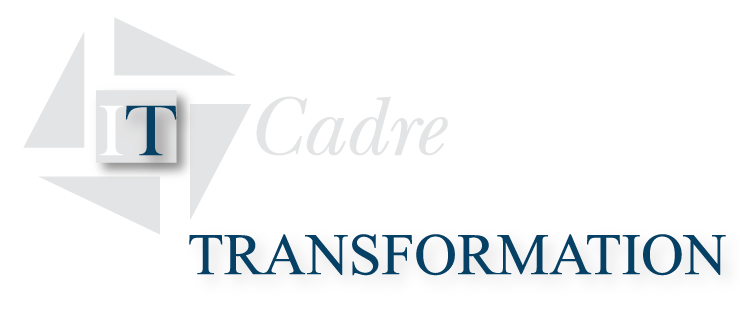
Transformation
Making the New Way the Normal Way
April 23, 2018 by Mike Morrisroe, Chief Engineer and COO

Last month, we talked about innovation and some important Do’s and Don’ts. Unfortunately, innovation isn’t enough. Ideas have to become reality to matter. The new way has to become the normal way. The shelves of the US Patent and Trademark Office are filled with inventions that never took root. They never became the normal way. This isn’t just true of the Beta VCR and LaserDiscs; it’s true of many great ideas that don’t transform their organization. As hard as it is to innovate, it’s even more difficult to transform an organization. In our work helping organizations transform, we see a pattern of successful steps to making the new way the normal way.
First, make sure you understand where you are. Your phone can’t get you to the nearest 4.5-stars-on-Yelp Yemeni café if it doesn’t first know where it is. Any navigator—from a Boy Scout to an astronaut—knows you must have an accurate "fix" on your starting position before you move or you’ll be in a fix for sure. Knowing your current state seems an obvious first step but we see many organizations frustrated with stalled transformation initiatives because they skipped it. They assume they know where they are and just want to get started. Everyone knows where they are, right? Some do have a pretty good fix on where they are, but it’s rare to find a shared and accurate understanding of an organization’s current state. Most of the problems we see in transforming an organization start with a lack of understanding on what really needs to be addressed. This shared understanding of the current state is the foundation for transformation.
Second, get an agreement on the strategy. Make sure everyone knows what right looks like. When we say strategy, we mean the choices you make about your future: where you want to go, what you want to focus on and what you choose not to do. We don’t mean a glossy brochure or 55 pages of shelf ware. Your strategy should be lay out your desired outcomes and what has to be true for you to achieve them. Specifically, you’ll need an agreement on the systems, policies, skills, capabilities, facilities, culture changes, and operational processes that need to be in place for you to achieve your desired outcomes. Build a consensus around these ideas and use it to motivate the organization. Make sure each person knows how they will be contributing to the final outcome—to making your strategy an operational reality. This is hard work, but without it, you will not gain meaningful agreement on the vision for the future. We’ve seen two ineffective techniques for developing a strategy that should be avoided:
- Avoid strategy by group negotiation. There is a school of thought that promotes maximum buy-in by including some of what every participant wants in the goals and outcomes—something for everyone. This will most likely result in an insidious transformation failure. The main effort will be overtaken by a million "Ands." Ands are almost always perfectly reasonable, good ideas. They may even be important. Unfortunately, Ands result in incremental change because they bleed off precious energy and focus from what you’ve decided is most important. The better approach is to do the hard work of figuring out exactly what you want, get feedback from teammates and communicate your strategy so the people implementing it feel empowered to say no to ideas, programs, and projects that are misaligned and don’t help achieve your goals.
- Avoid the "Headquarters knows best" mentality that fails to recognize the need for culture change. The quickest way to begin a transformation is to direct it from the top, with no feedback or engagement with the people who will implement it. This will feel like it is working until it fails. People will quietly accept it and provide little feedback. Transformation fails because there is no ownership, no engagement and no passion for the change.
Third, lay out a realistic roadmap. Transformation requires operations, systems, and culture to change. All three have strong anti-bodies against major change. All three need to be addressed together to make the new way the normal way. Gain cross organization commitment to delivering the necessary capabilities constrained by time and investment while including cross organization dependencies. The most effective roadmaps show outcomes not tasks. You need to manage observable things that are accomplished, not things that people are doing. This shift in perspective creates a great deal of transparency. It enables leaders to form independent assessments of where things really stand without the diversion of tracking effort rather than outcomes. Next, in a similar vein, flow dependencies based on outcomes not tasks – make it easy for people to tell when they need to work closely with each other. Be ready for things to go wrong and for things to succeed. In both cases, use a roadmap for visibility and take action immediately.
Now, armed with a shared understanding of where you are, a shared agreement on where you’re going, and a roadmap to get you there, you need to EXECUTE to make the transformation a reality. Next month, we’ll share our thoughts on Execution.